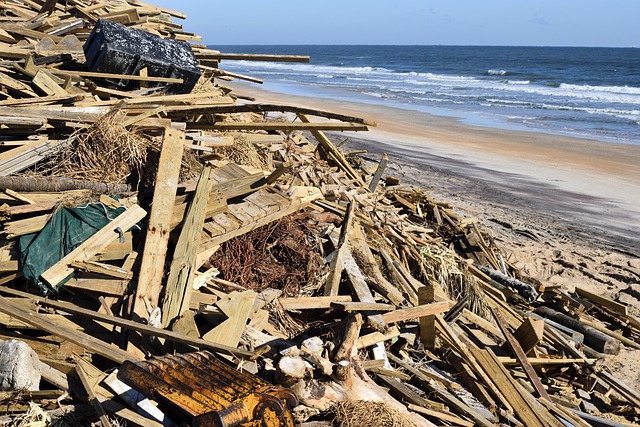You live in a hurricane-prone area and worry every year about potential storm damage to your home. What if there was an innovative type of insurance that pays out quickly when specific dangerous conditions happen, like high wind speeds in your zip code? Parametric insurance could give you peace of mind and fast funds to repair damage without waiting for an adjuster’s assessment.
In this article, you’ll learn what parametric insurance is, how it works compared to traditional insurance, the advantages it offers for natural disaster coverage, and whether it might be a good option for you.
What Is Parametric Insurance?
Parametric insurance protects against financial losses from natural disasters like hurricanes, earthquakes, or excess rainfall. Rather than compensating for actual damages like traditional insurance, parametric policies payout based on the intensity of an event.
If a hurricane hits, for example, a parametric policy would provide coverage based on factors like the storm’s wind speed or the amount of rainfall in your area. Exceed the policy’s triggers, also known as “tipping points,” and you receive a payout.
Stay under the triggers and you receive nothing. The key advantage is that claims get paid quickly since there’s no need to assess actual losses on the ground.
For some, parametric insurance may seem risky since you could pay premiums for years without receiving a payout if disaster events don’t meet policy triggers. However, for many businesses and communities frequently impacted by natural catastrophes, the speed and certainty of parametric coverage provide valuable financial protection
If you live or work in a disaster-prone region, parametric insurance could provide your operation with a financial safety net in the aftermath of an event.
Though relatively new, parametric coverage is gaining popularity as an innovative solution for natural catastrophe risks. Talk to your insurance provider to learn more and find out if parametric policies make sense as part of your risk management strategy.
How Parametric Insurance Works
Parametric policies provide coverage based on a predefined index, rather than the actual losses incurred. It operates straightforwardly:
Policyholders select coverage parameters
When you purchase a parametric policy, you choose factors like the location of your property, the value insured, and the disaster event you want coverage for (e.g. hurricane, earthquake). Premiums are calculated based on these selections.
A disaster event triggers the policy
If a disaster event like a hurricane or earthquake occurs in your selected location and meets the intensity threshold in your policy, it triggers an automatic payout. There’s no need to file a claim or prove specific losses.
Payouts are calculated based on the pre-agreed index
The payout amount depends on the selected coverage amount in your policy and the severity of the disaster event based on an objective index (e.g. wind speed, ground shaking intensity). Funds are dispersed quickly, often within days of the triggering event.
It provides fast relief when it’s needed most
One of the biggest benefits of parametric insurance is how swiftly it provides financial relief after a catastrophic disaster. Rather than waiting months for traditional insurance claims to process, parametric policyholders know within days exactly how much they’ll receive to help recover and rebuild. For areas frequently impacted by natural disasters, parametric insurance can be a vital tool for resilience.
Parametric policies are typically purchased as a supplement to traditional insurance, not as a replacement. They fill a unique role in providing a timely infusion of funds in the aftermath of disasters before rebuilding can even begin.
The Benefits of Parametric Insurance for Natural Disaster Protection
Parametric insurance offers several advantages over traditional insurance for protecting against natural disasters. With parametric insurance, claims are paid out based on the intensity of an event (like wind speed or rainfall amount) measured by independent third parties, rather than the amount of damage. This means claims can be paid much more quickly.
You’ll get your payout within days or weeks instead of months. When disaster strikes, fast access to funds can make a huge difference in recovery. The payout is predetermined based on the policy so you know exactly how much you’ll receive if an event occurs within the coverage parameters. There’s no messy claims adjustment process to delay payment.
Parametric policies also provide more coverage for indirect losses and business interruption. Traditional policies typically only cover direct physical damage. But if your business is shut down due to damage at a critical location, lost revenue and extra expenses can be substantial. Parametric insurance addresses this by providing payouts for correlated events that impact your operations.
Premiums for parametric insurance are often lower than traditional policies. The simplified claims process and reduced claims uncertainty mean lower costs for insurance companies. They pass on some of these savings in the form of lower premiums for policyholders. Parametric policy can also have lower deductibles and broader coverage, for comparable or lower premiums.
For the level of coverage provided, parametric insurance represents an affordable solution for natural disaster protection. While the payouts are not meant to replace traditional insurance altogether, parametric policies fill in many of the gaps to provide more comprehensive protection for homes and businesses. When the next big storm hits, parametric insurance can help get you back on your feet faster.
Conclusion
So there you have it. Parametric insurance is a newfangled way to get covered in case Mother Nature throws a tantrum in your neck of the woods. It pays out automatically based on the intensity of the storm or quake instead of waiting around for claims adjusters to tally up damages.
So while it won’t cover 100% of your losses, it puts cash in your pocket fast after a disaster. That way you can start getting your life back together sooner. It’s not for everyone, but if speed matters
more than making sure every last shingle is accounted for, it’s worth looking into. At least now you’ll know the basics if your agent ever brings it up. With the weather getting weirder by the day, a little extra preparation can go a long way.






